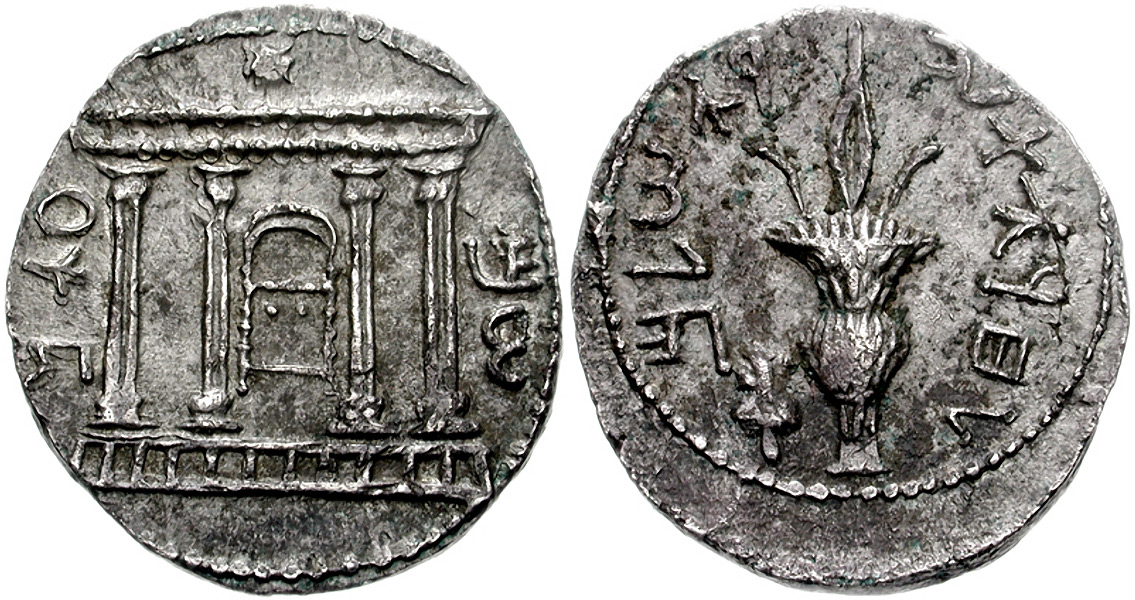<![CDATA[A cache of rare silver coins dating back to when the Hasmonean dynasty ruled Judea (from 140 BCE until 116 BCE) has been discovered on a recently exposed estate in Modi’in. Workers at the excavation site, which is being conducted by the Israel Antiquities Authority in anticipation of the construction of a new neighborhood; found the treasure trove of coins hidden in the crevice of a rock wall, suggesting that whoever put them there was never able to return and retrieve them. The cache, 16 coins in all, including tetradrachms and didrachms (shekels and half-shekels) bearing the images of King Antiochus VII and Demetrius II, his brother; were minted in the town of Tyre. The coins are representative of nine consecutive years -- 135 BCE through 126 BCE -- with at least one coin from each year. A number of bronze coins minted by various Hasmonean kings from the same time period have also been found at the site. The bronze coins carry the names of kings such as Judah, Yochanan, Jonathan and Mattathias along with the title: High Priest and Head of the Council of the Jews. Evidence has been found which indicates the estate was owned at the time by a Jewish family of some means, and given the thought that would have gone into the coin collection, it’s likely the patriarch was a collector. What’s also evident is that the family was forced to flee for some unknown reason, and never able to return. At one time the estate was surrounded by olive trees and vineyards on adjacent hills, and grain was grown in the valleys. A production area, which includes storehouses and an olive press for the production of olive oil, is currently the focus of excavation efforts. Numerous winepresses carved from rock have also been uncovered near the estate, reflecting how important grape production and wine making were to the area. The house itself was built with massive walls, providing security from attack. Evidence has also been found suggesting the estate’s residents took part in the first Roman revolt in 66 CE. The coins from this period were stamped “Year Two” along with the slogan “Freedom of Zion”. The estate was in operation even after the Temple was razed in 70 CE. It was also well prepared for resisting the enemy during the Bar Kokhba rebellion – the inhabitants had filled the rooms adjacent to the outer wall with large rocks to create a fortified barrier. Additionally, archaeologists found hiding refuges that had been carved out of the bedrock under the floors of the house. The hiding places were connected by tunnels which ran between hidden rooms, water cisterns, and storage pits. Researchers also found the estate’s Jewish inhabitants had meticulously adhered to laws governing ritual purity. They had installed mikva’ot (ritual pools) within their compound and vessels which were made of chalk, which cannot become ritually unclean according to Jewish law. Further excavation of the area revealed an opening in the pool that led to another extensive hiding place, containing a variety of artifacts from the period of the Bar Kokhba rebellion. The archaeological discoveries will be persevered within an archaeological park, to be located centrally within the new neighborhood. ]]>
Coins Hidden More Than 2,000 Years Ago Discovered
